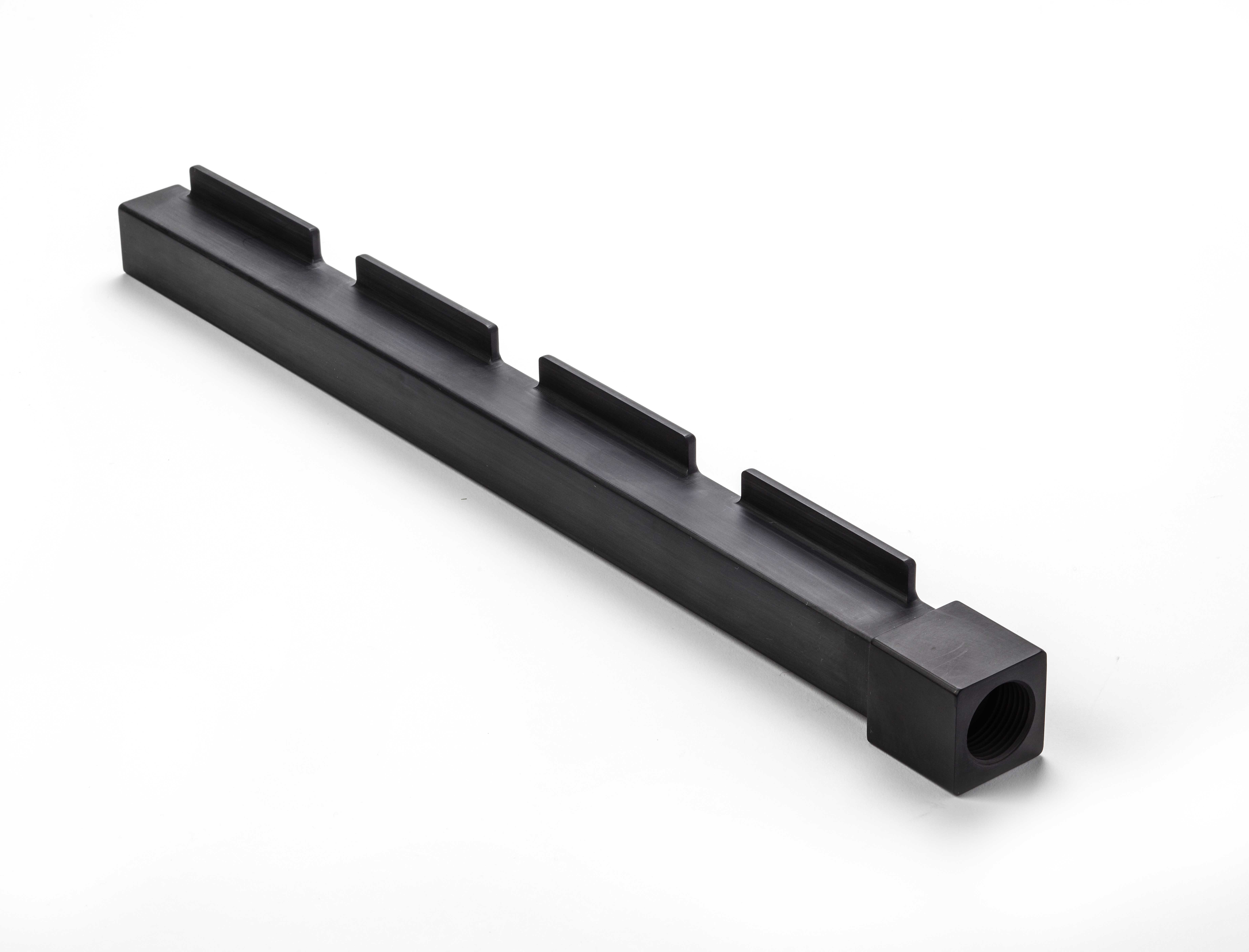
Solvay Specialty Polymers has been selected to provide its KetaSpire polyetheretherketone (PEEK) to make an oil scavenger line for an automotive engine’s dry sump modular oil pump system.
The component has been made as part of the Polimotor 2 project, which aims to design and manufacture an all -plastic, four-cylinder, double-overhead CAM engine that weighs between 138 to 148 lbs (63-67 kg), or about 90 lbs (41 kg) less than today’s standard production engine, for competitive racing.
Allegheny Performance Plastics LLC machined the 18 in. (45 cm) oil scavenger line from a stock shape available from Texas-based Drake Plastics. The shape was extruded with Solvay’s KetaSpire KT-820 CF30 PEEK, a 30% carbon fiber-reinforced grade that reportedly retains high modulus and best-in-class fatigue resistance at continuous-use temperatures reaching 240°C (464°F).
‘Polimotor 2’s design for its oil scavenger line required us to machine a much longer than usual thermoplastic part from a stock shape rod’ said Greg Shoup, president of Allegheny Performance Plastics. ‘We found that Solvay’s KetaSpire® PEEK machined very nicely in our CNC machining processes, and the finished part was within print tolerance, which allowed it to fit perfectly on the dry sump.”’
Besides KetaSpire PEEK, other Solvay materials targeted for use in the engine encompass Amodel polyphthalamide (PPA), AvaSpire polyaryletherketone (PAEK), Radel polyphenylsulfone (PPSU), Ryton® polyphenylene sulfide (PPS), Torlon polyamide-imide (PAI), and Tecnoflon VPL fluoroelastomers.
This story uses material from Solvay, with editorial changes made by Materials Today. The views expressed in this article do not necessarily represent those of Elsevier.


